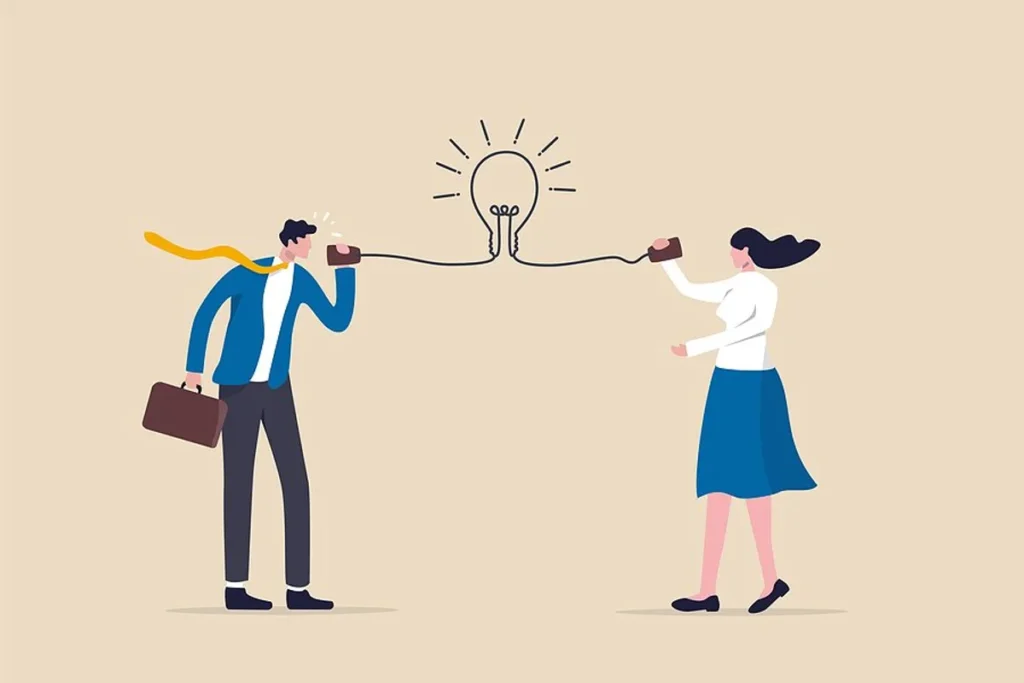Verbal Communication: A Complete Guide

Verbal Communication is a vital skill that allows us to express ourselves clearly, connect with others, and make an impact. We can build relationships, influence others positively, and confidently navigate challenges by mastering effective Verbal Communication. Enhancing your Communication skills empowers you to excel in various areas of life, from career advancement to personal growth.
What is Verbal Communication?
Table of Contents
Toggle
Verbal communication involves the exchange of thoughts, feelings and ideas using spoken words. Its effectiveness depends upon various aspects, Which includes the choice of your words, tone and clarity of speech. It encompasses speaking, listening, and understanding nuances in language.
It is the process of using spoken words to express ideas, thoughts, and feelings to others. And it involves using our voices to communicate with people around us, whether it’s through conversations, presentations, or speeches.
Words are sounds that have an intentional meaning within a conversation. This can be in person or through electronic devices, such as a telecommunication. The purpose of verbal communication is to communicate a message through the use of words and sounds, providing contextual clarity to a message geared toward a receiver.
Five Types of Verbal Communication

The type of verbal communication used refers to where and with whom we communicate. Here are five examples:
1) Intrapersonal Verbal Communication
In Intrapersonal communication is our internal dialogue and We all do this often. But we often without realising it, we talk to ourselves or have conversations with others in our head. And this type of verbal communication is also referred to as inner speech, self-talk, internal discourse and inner experience.
2) Interpersonal Verbal Communication
In Interpersonal communication involves two parties. Like speaking one-on-one with a friend or colleague. It evolves using spoken words, listening when the other person is talking, and understanding what is being said and responding accordingly.
3) Group Verbal Communication
This is where more than three people are involved in a conversation. There may be more people this time but the same rules apply as with interpersonal communication. SO, each person has a chance to speak, while others listen and respond at the right time.
4) Public Verbal Communication
In Public communication can be anything from speaking aloud at a school assembly to being a keynote speaker at a conference. It’s communicating to an audience of people, who have come to hear what you have to say. This form of verbal communication takes some people completely out of their comfort zone.
5) Mass Verbal Communication
This is all about talking to the masses. So, think about a TV show with a panel of experts, or a podcast where thousands of listeners tune in at the same time. Mass verbal communication involves a small group of speakers, who work as a team to share views and ideas with their audience.
What are the differences between Verbal and Non-verbal communication?

Verbal Communication
1) It relies on the use of spoken or written words to convey messages.
2) In Verbal Communication requires the use of a particular language, including grammar, vocabulary, and syntax, to convey meaning.
3) It is often conscious and intentional. We choose our words and structure our sentences to convey specific meanings.
4) A Verbal Communication provides explicit and precise information through words.
5) It allows for detailed explanations and can convey complex ideas.
Non-Verbal Communication
1) This relies on facial expressions, body movements, gestures, and other nonverbal cues.
2) In Non-verbal Communication is universal and can transcend language barriers based on visual cues that people across cultures generally understand.
3) It can be both conscious and unconscious. And It involves using gestures or facial expressions without being fully aware of the messages they convey.
4) It convey emotions, attitudes, and social cues but may not provide specific details or explicit information.
Tips for Improving Your Verbal Communication Skills
Here are some tips to improve your verbal Communication skills:
1) Think before you speak
2) Be prepared with your pointers
3) Use simple language to convey your idea
4) Speak confidently
5) Understand the audience and speak so that they clearly understand
6) Always speak in a respectful and cheerful tone
7) Pay attention to your body language
8) Listen to feedback and what the audience is saying
Some Ways to Improve Your Verbal Communication Skills
Improving your verbal communication skills can greatly enhance your effectiveness in various aspects of life. So, Here are some ways given below:
1) Be Clear on What You Want to Say
If you have a big meeting, presentation, your interview or a complex subject to discuss with someone, and it helps to know what you want to say in advance. Just Grab a pen and paper and write down the topics, keywords and ideas you want to discuss. You may even find brainstorming useful.
Start with a clear introduction that outlines the main points you want to convey. Just Use concise language and avoid jargon or unnecessary details that might confuse your audience. If you’re unsure that you have the right tone, ask a friend or colleague to review things.
2) Take Your Audience into Consideration
Before speaking, think about who your audience is and what they might already know about the topic. Tailor your message to their level of understanding and use language that is appropriate and familiar to them. Consider their interests, concerns, and any cultural or demographic factors that might influence how they perceive your message.
We adapt how we communicate with others for a variety of reasons. Our opening communication, which is basically the first impression we give to the other party, needs to be on point. So, by considering our audience allows us to pitch the conversation at the right level.
3) Don't Forget About Nonverbal Communication
Don’t forget about nonverbal communication when engaging with others. It plays a significant role in how messages are perceived and understood. Nonverbal cues such as facial expressions, gestures, posture, and eye contact can convey emotions, attitudes, and intentions more powerfully than words alone.
If you Maintain eye contact and a neutral posture, smiling when greeting someone and being mindful of your facial expressions are all ways to make the receiver feel comfortable in your presence.
To enhance your communication skills, pay attention to your own nonverbal cues and be mindful of how they might be influencing the conversation. Similarly, observe the nonverbal signals of others to gain insight into their thoughts and feelings.
4) Engage in Active Listening
Active listening is crucial to being an excellent verbal communicator. After all, how do you know how best to respond to someone if you don’t listen to them? Just listen them actively without interrupting in between them. If you listen actively so they you can make good bond with them.
It means giving full attention to the person or people speaking to you. You just need to digest and process what they say before you answer. This may involve taking a few seconds to compute things before responding.
Conclusion
Mastering verbal communication is a continual journey which involves honing various skills such as clarity in expression, consideration of your audience, awareness of nonverbal cues, and active listening. verbal communication can be described as a key driver of success.
It enables clear expression, fosters learning, and it strengthens relationships. By doing this skill it empowers us to confidently influence, collaborate, and navigate challenges.
If you start practice these skills consistently, you can enhance your ability to convey ideas effectively, build meaningful relationships, and navigate diverse communication scenarios with confidence.
This Effective communication not only facilitates understanding but also fosters connections and drives success in both personal and professional endeavors.
